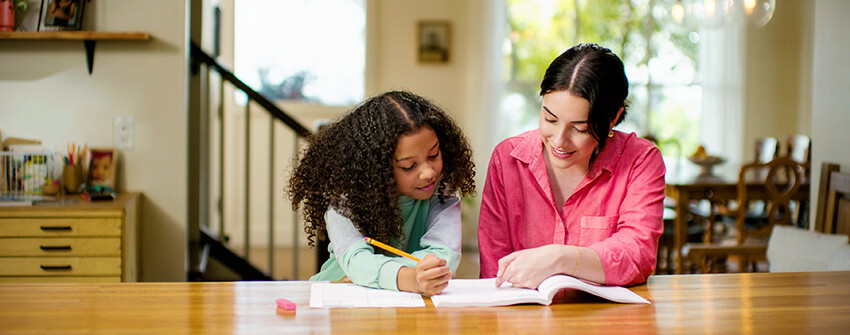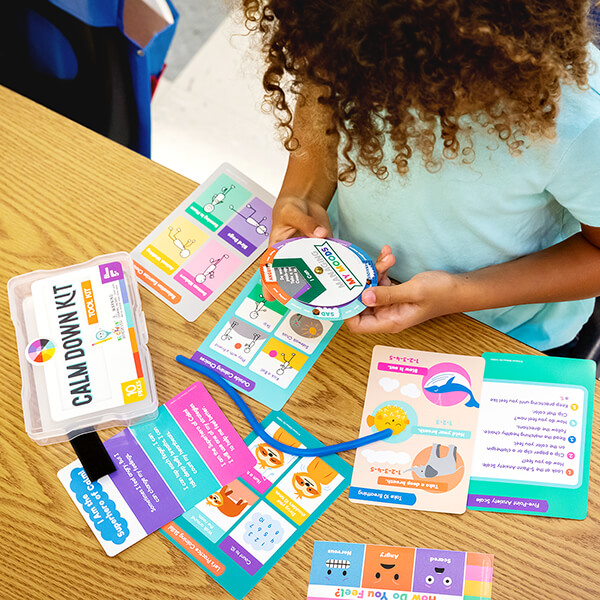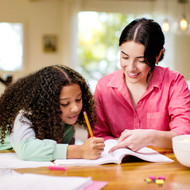Resources for Dealing with Learning Loss and to Promote Recovery
Posted by Payton Dockery on Jan 3rd 2023

Everyone suffered some kind of loss during the length of the COVID-19 pandemic. However, unless you are a parent or a teacher, you may not think about the effects that the pandemic has had on our younger generation of school-age children.
Those that haven’t been around children have NO idea the devastation the pandemic had on children’s academic progress and mental health. Some of our youngest students didn’t get to step foot in a school until they were in second grade; those already in school lost valuable skills through no fault of anyone other than the fact that it was an uncharted, unprecedented experience. So now what?
One of the most common phrases being thrown around in the media and with educational experts is “learning loss.” I’ll pause while all the teachers and parents collectively groan at hearing this phrase one more time. How much learning was lost? How do we prevent more? How do we catch children up? So many unanswered questions and certainly no easy answers.
I am a teacher and a parent, so I experience the pain and anxiety of combatting learning loss from both sides. As parents, we know that our children are behind in some way, we are tired of hearing they are behind, and frankly, we just want the tools to help us address that learning loss at home. As teachers, we also know our students are behind, we are also extremely tired of hearing they are behind, and we also just want to help them grow. Teaching has always been stressful, but post-pandemic school expectations have been nearly impossible; catch everyone up from what they are missing AND teach the current curriculum all in the same number of hours and days. So, I’ve gone on long enough about what we already know. How about we talk about what we can do to help?
Parents and teachers are here to help children grow, learn, and reach their potential, which is why I wanted to share some learning loss resources that have worked for me personally as both a teacher and a parent to help my kids reach their potentials both in the classroom and at home. My hope is that they will help you and your children, too!
Tools to Help Your Children Overcome Learning Loss and Reach Their Potential at Home
As parents, we need a starting point to work with our children, and that sometimes includes a better understanding of how things are being taught today. Enter… the Spectrum® Complete Learning + Videos workbooks. These are incredibly helpful for parents that have children in grades 3–6. They cover all of those critical subjects like math, reading, and language arts, and the best part is that they also come with parent support and video tutorials to help you feel confident in helping your child!
I have found that Spectrum workbooks overall are great because they have a workbook for nearly every single subject for children in grades preschool – grade 8. If your child is missing or struggling with a skill that was taught in an earlier grade, or is struggling with a certain concept or subject level in their current grade, you can get a workbook for that grade and subject level! Don’t be afraid to mix and match: whatever your child needs are, is where you should focus on.
If you have a child in grades PreK – grade 2, like myself, who is struggling with math, I would also recommend using the Spectrum Hands-On Math workbooks for your child’s grade level—these are a great tool that incorporates fun, hands-on learning math activities for kids.
Another great resource I recommend to have at home to brush up on skills is the Be Clever Wherever reference books and manipulatives. The Break It Down Math Reference Books give step-by-step directions on how to complete math operations, word problems, and other important math concepts. Whether you’re reinforcing old concepts or helping your child understand new skills, the manipulative kits and Things on Rings feature great visual aids and references for essential math, reading & writing, early learning and social-emotional learning topics. Remember: your kids have manipulatives at school, so it is a great idea to have some at home for them to use, too!
Language Arts and Reading are critical subjects and a major area where children seem to have gaps in their skills. Making sure your children have all the necessary skills to decode words as they read is crucial for future success. You don’t need to have an education degree to help! Check out these Spectrum ELA workbooks to help your children with their reading skills. They accommodate each grade level, and you can work with your child on any ELA subject area that they may need additional help with.
Tools to Help Your Students Overcome Learning Loss and Reach Their Potential in the Classroom
Now as teachers, most of us have all kinds of curriculum resources that are given to us by our school districts that we are expected to use as we teach. We are also extremely resourceful in getting ideas and materials we need to help our students. What I want to share here is an area that we don’t always get as much support in or as many resources for but is just as important as academics for our students’ growth: social-emotional learning. After the isolation students felt during the pandemic and the anxiety and stress they may have felt for a number of other reasons, we have to make sure we take care of our students’ emotional needs so that they CAN learn.

One great little resource that I have found my students really love is this Be Clever Wherever® Calm Down Kit. Each kit has stress-reducing tools, such as a fidget, as well as cards and resources to help students relieve stress, reduce anger, and be able to express how they are feeling. Not all students need this, but having a few on hand so that students can use them on an as-needed basis is a great way to support our students emotionally.
Along those same lines, having social emotional learning classroom décor is just as important as academic resources. First of all, showing students that their (and your) emotional well-being is valued and is worthy of being nurtured is essential. Having a Calming Strategies Chart Set can help students learn to manage those big feelings. You can also create a calm down corner and have some of the calm down kits in the area with the posters for student use when they need it.
Any kind of motivational posters are well worth the investment to have around your classroom and your school hallways. Students and teachers alike need reminders of their worth daily, especially when things are tough. I love these Growth Mindset Quotes Posters or any other of these Growth Mindset resources to add some intentional decorations to your school walls.
Hybrid learning loss resources for both at-home and/or in the classroom:
We certainly have to acknowledge the fact that our kids likely experienced trauma from the pandemic (and potentially from other sources as well), and that we, as important adults in their lives, are here to help. There are many great books that you can read to a class of students, a small group, or to your child at home to help them process their feelings, talk through them and help them understand how to move forward in a healthy way while also helping them to feel seen.
Some books I LOVE both as a teacher and parent for this are the Disney Learning I Can series, How to be Friends series (my personal favorite!), and the Carl Can and Katie Can series.
A resource that I found incredibly helpful for older students is this Mental Health Workbook that helps students, parents and teachers discuss difficult mental health topics such as, anxiety, depression, PTSD and more. I cannot stress enough how much this book has been a great tool to have on hand as a conversation starter with older students.
One final resource that I can’t say enough about is the Edu-Clings product line. I LOVE these things! They offer a variety of different sets, from letters to numbers to parts of speech, and they even have center activities. These will stick to a white board, but they can also stick to a window, a refrigerator door, or a mirror! These are great to use at school, as well as home, to help your child practice whatever they need.
I hope that these resources give you at least a starting place to best help your children and/or students along the path to reaching their potential. Here’s to not looking at this as “recovering learning loss” but as “moving forward on the path to success.”

